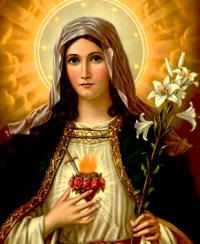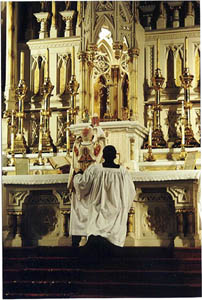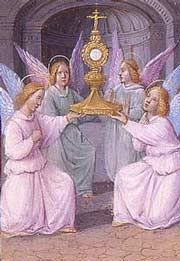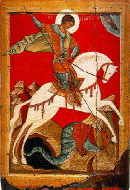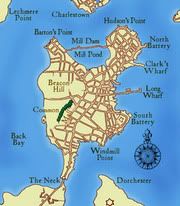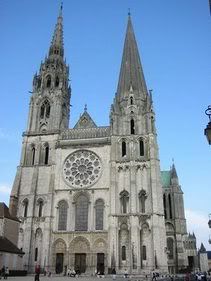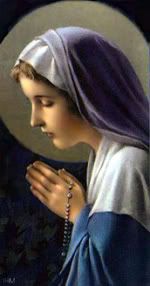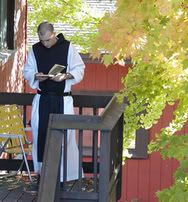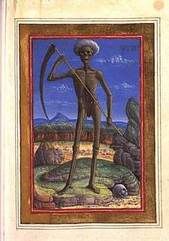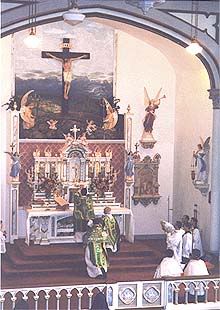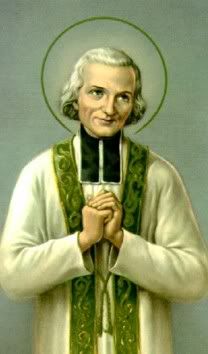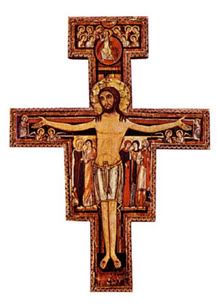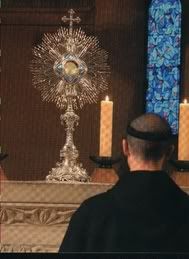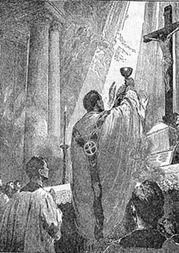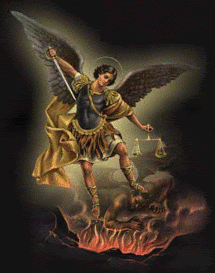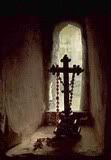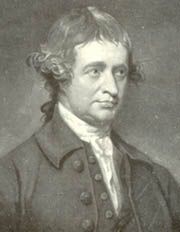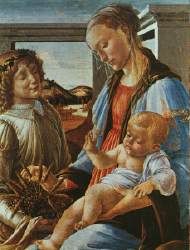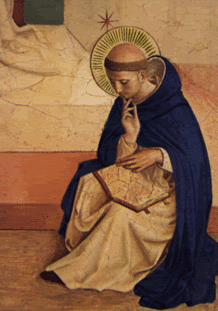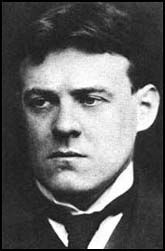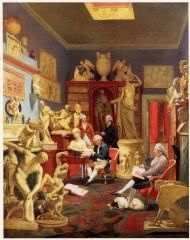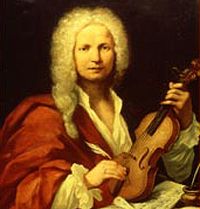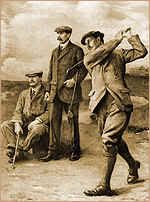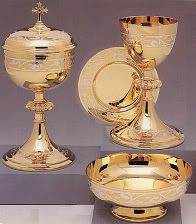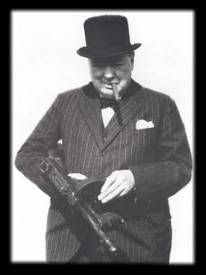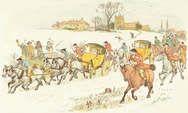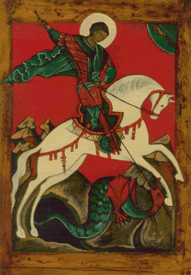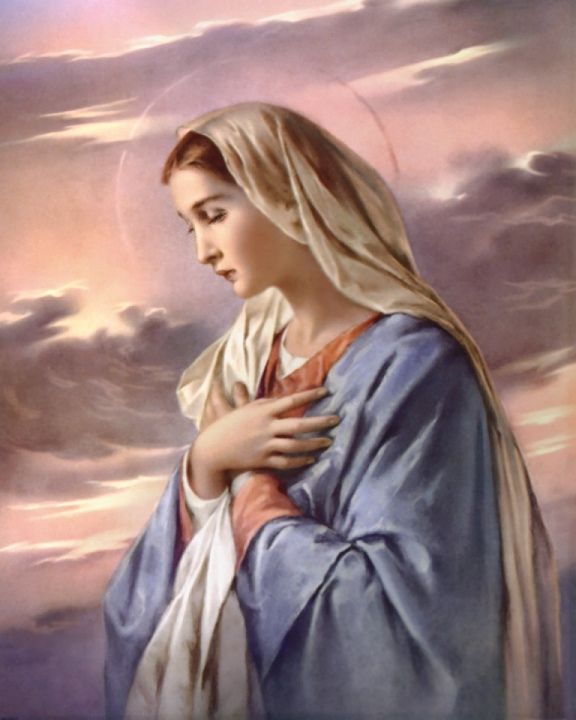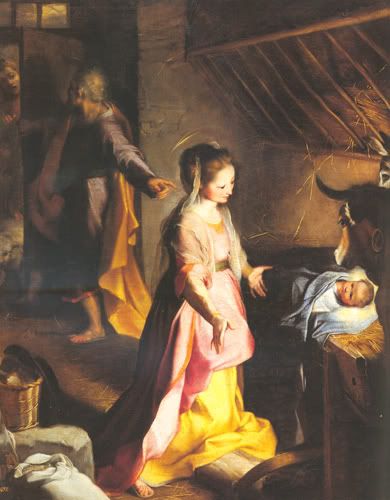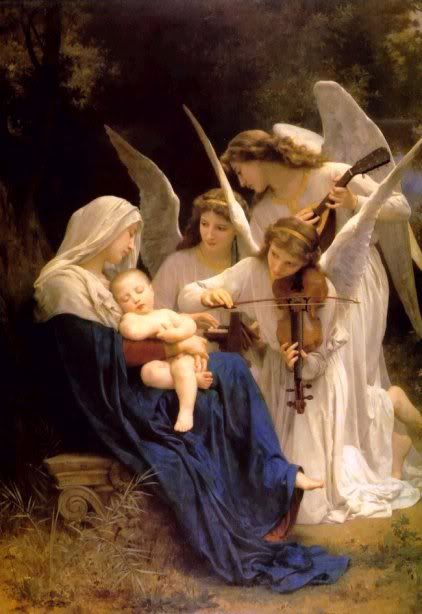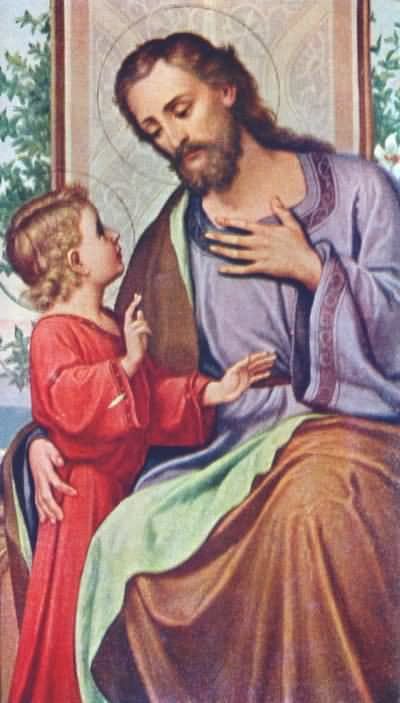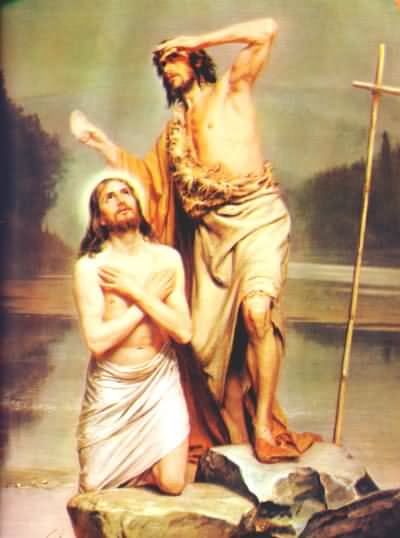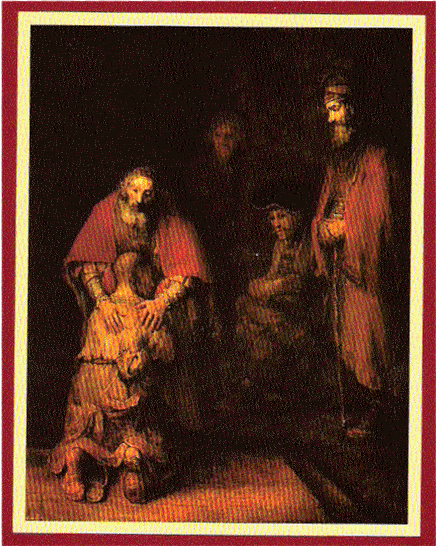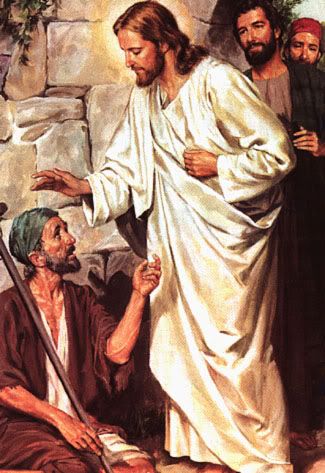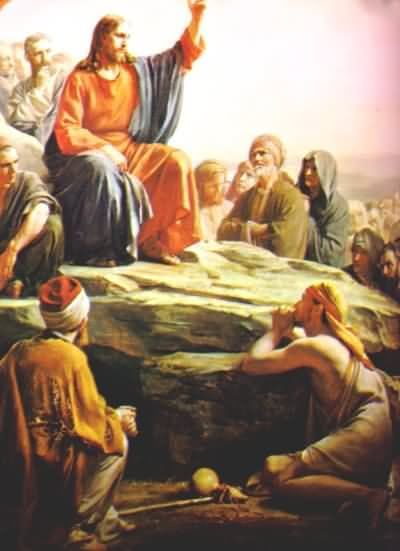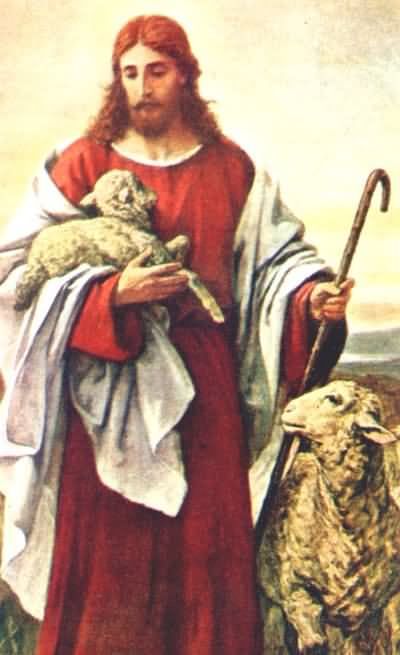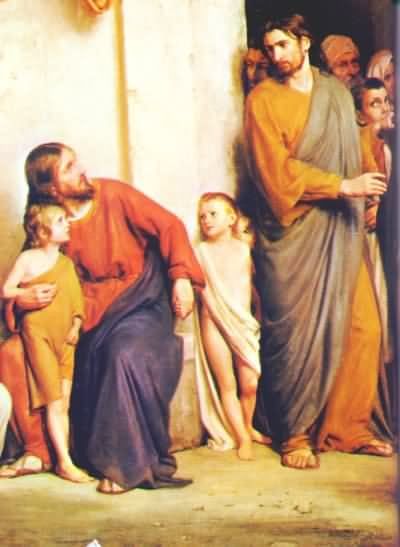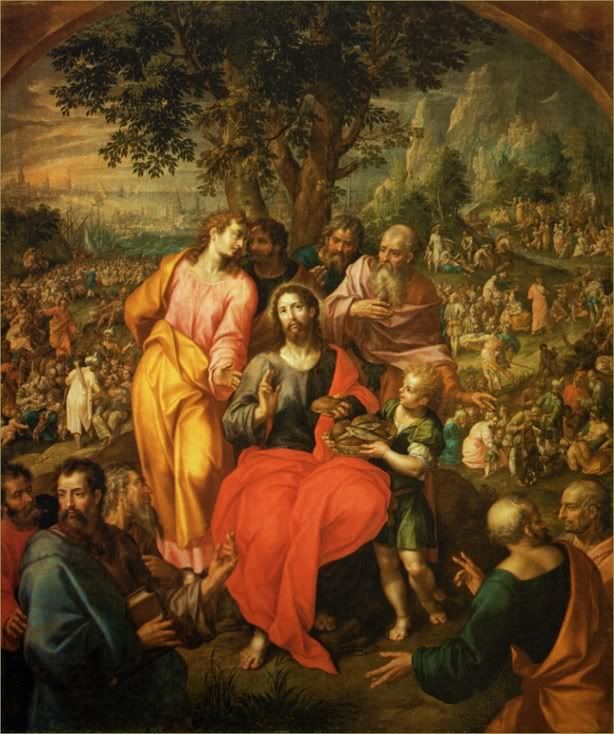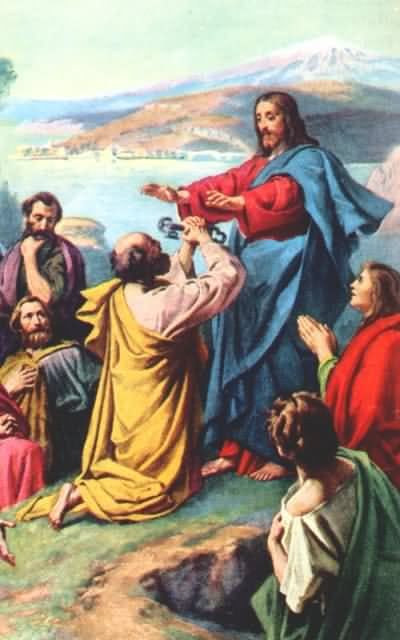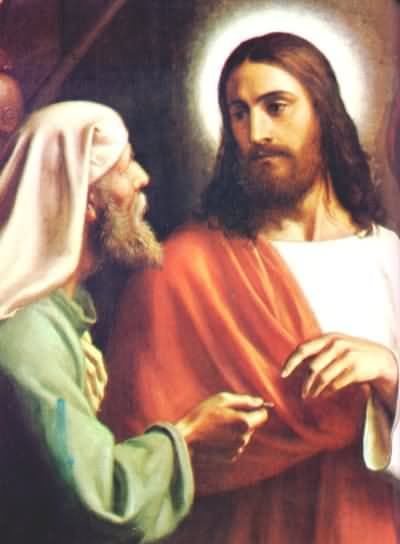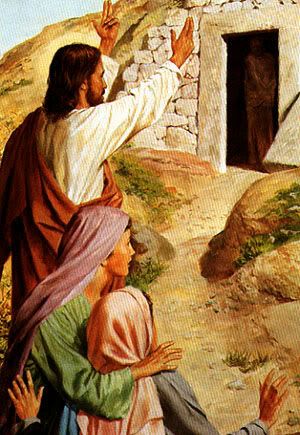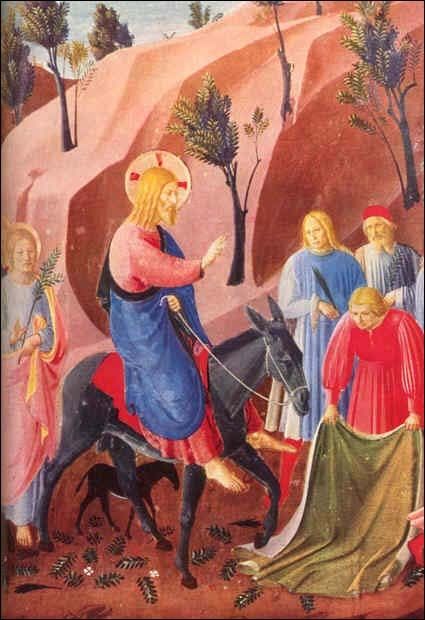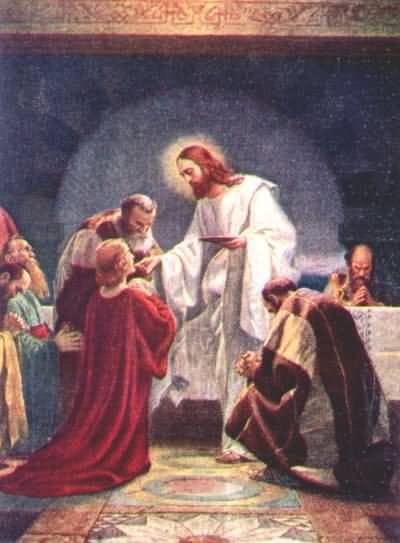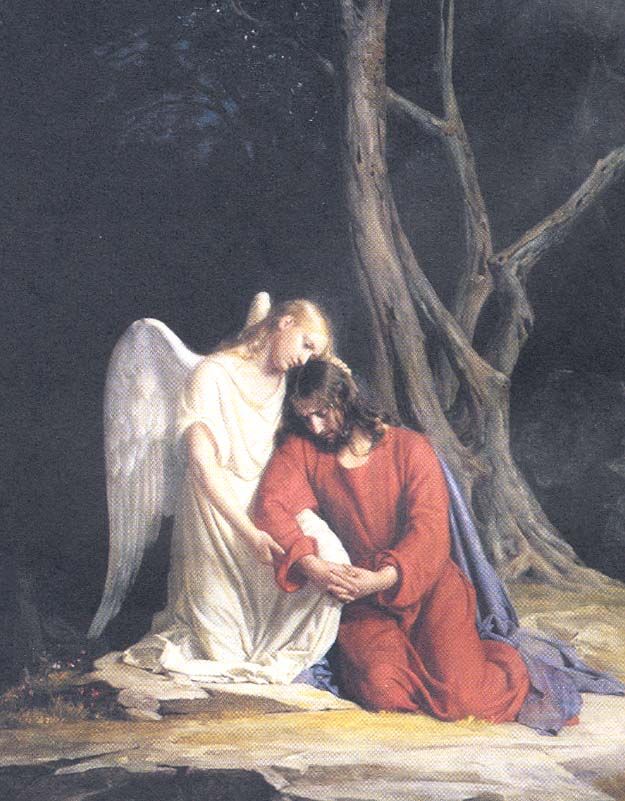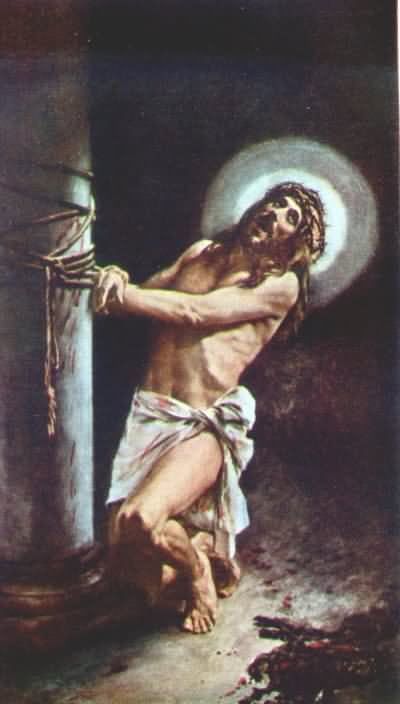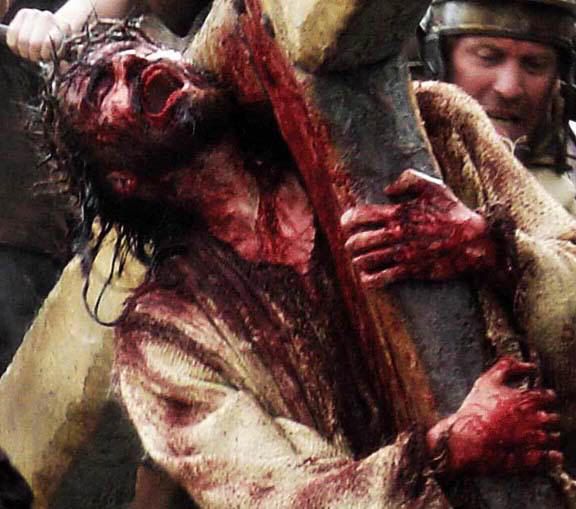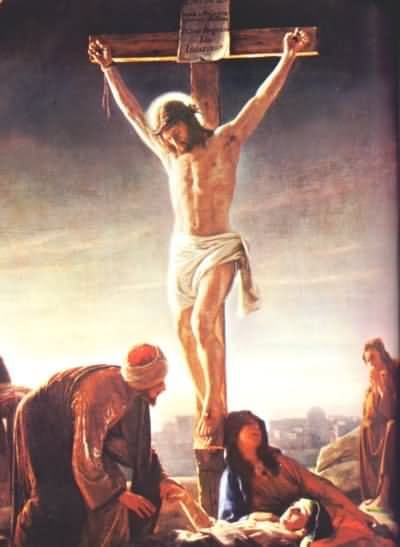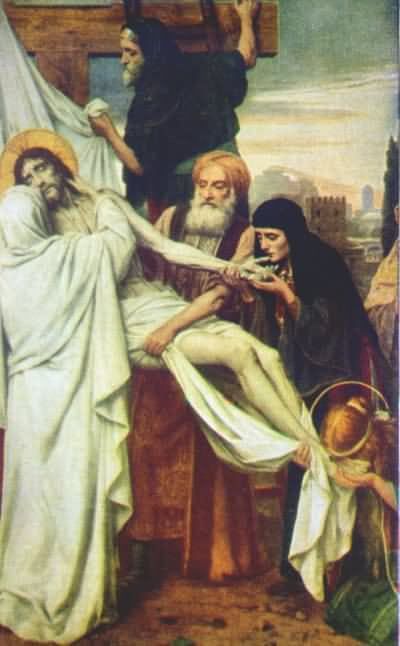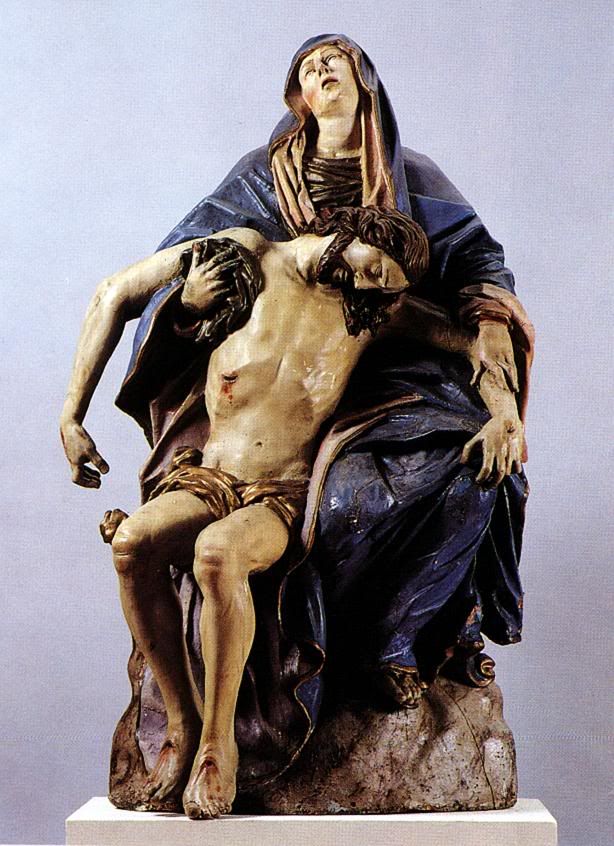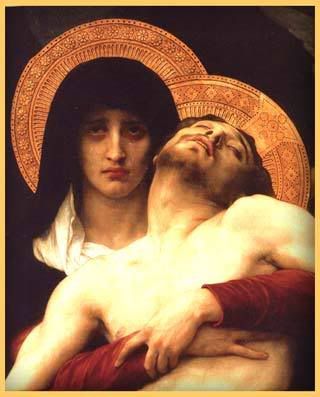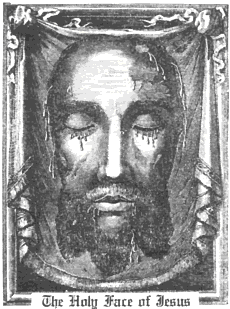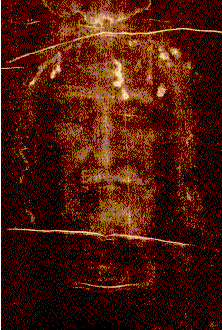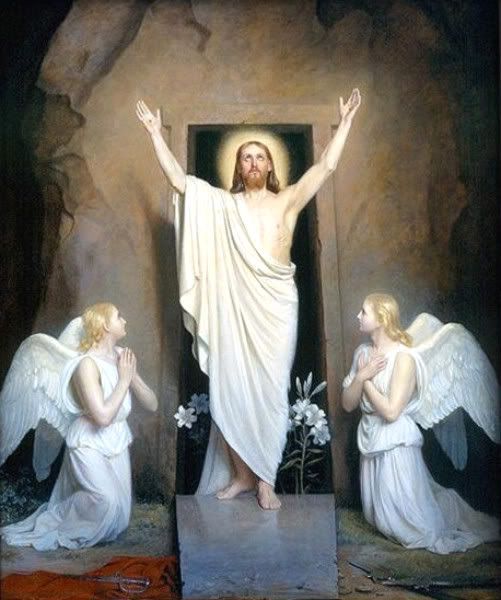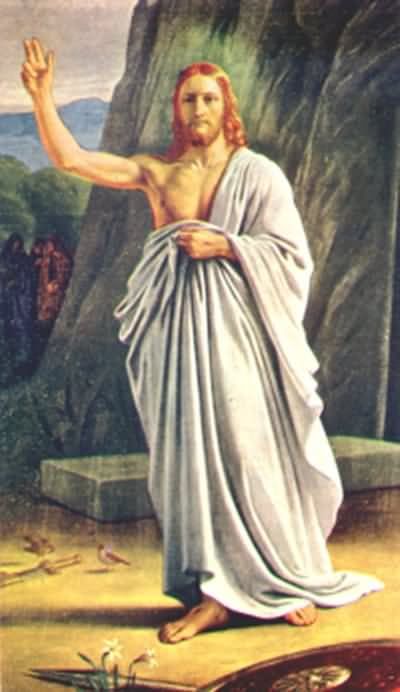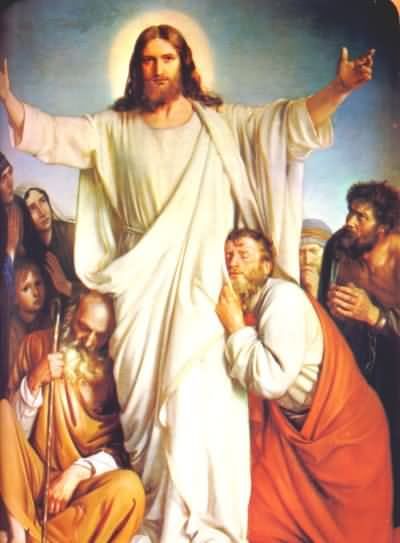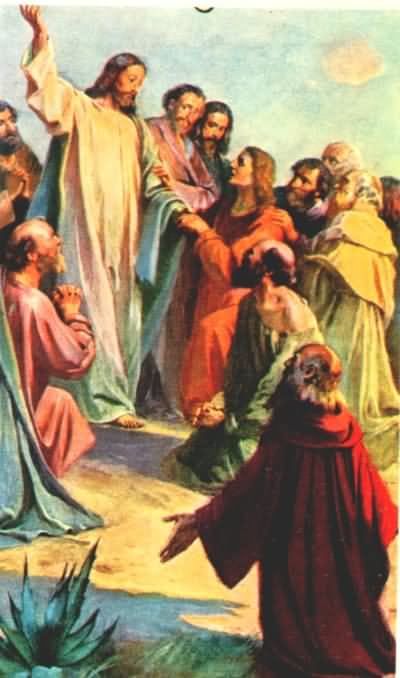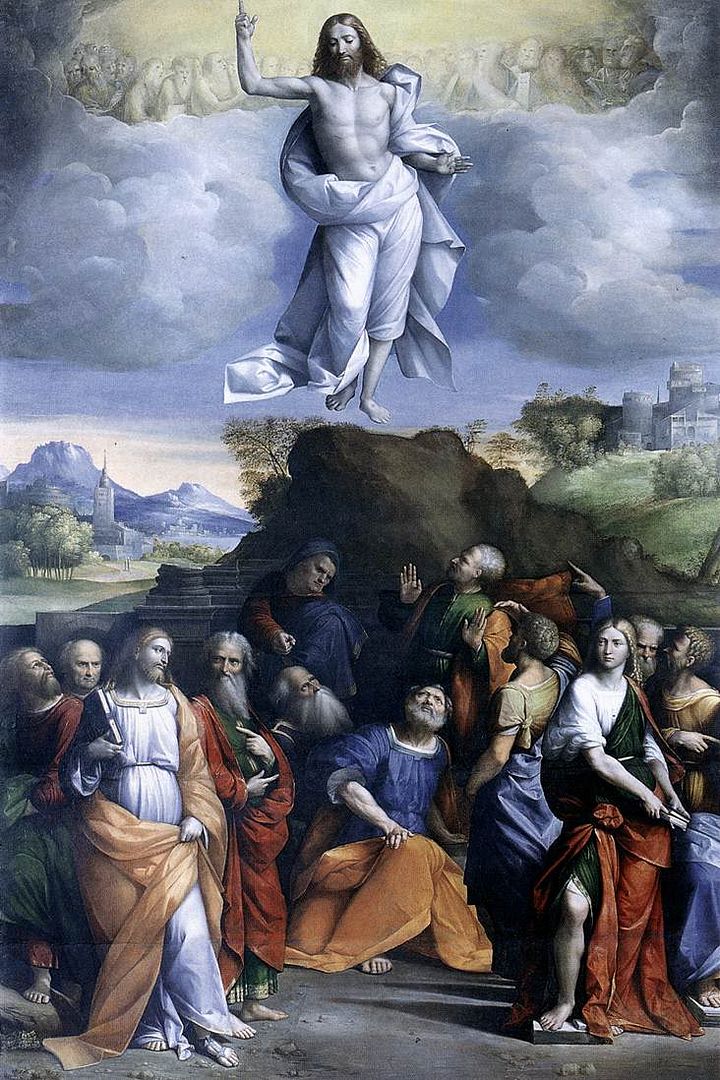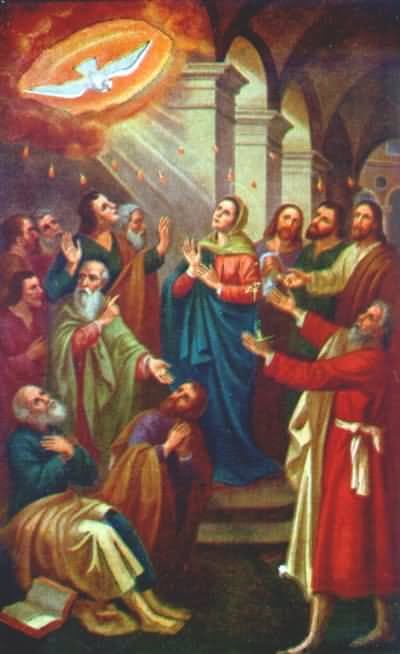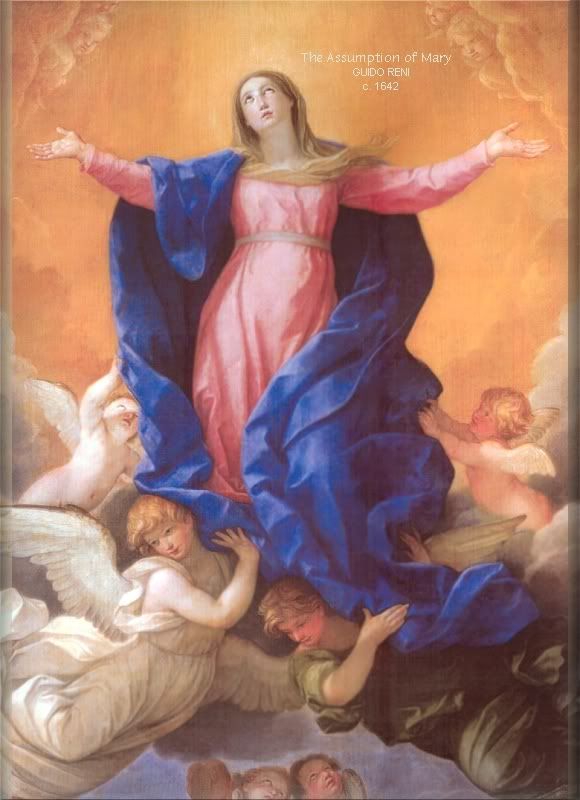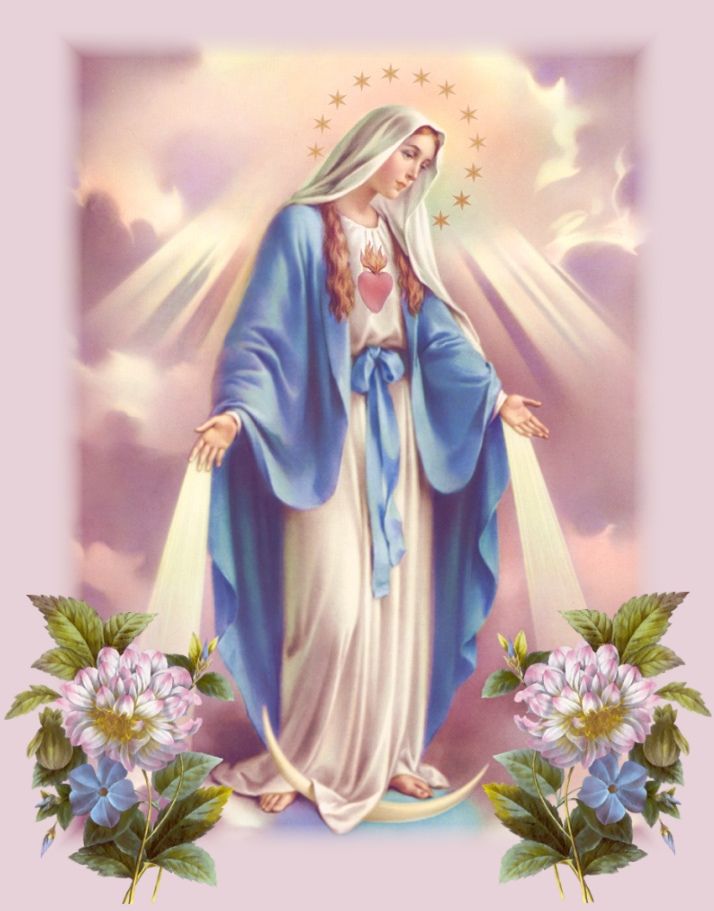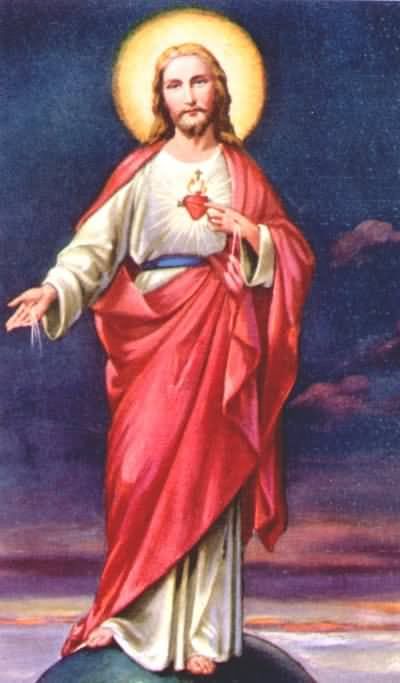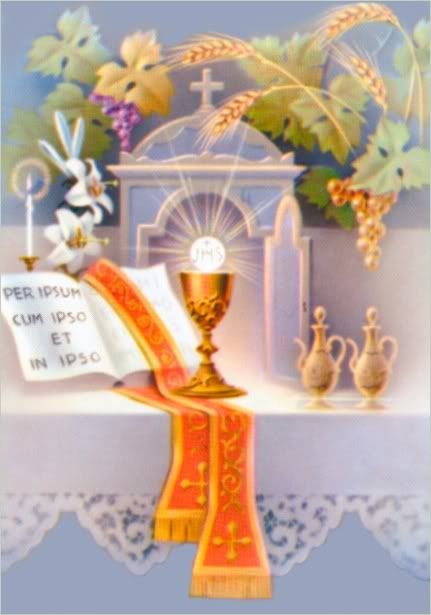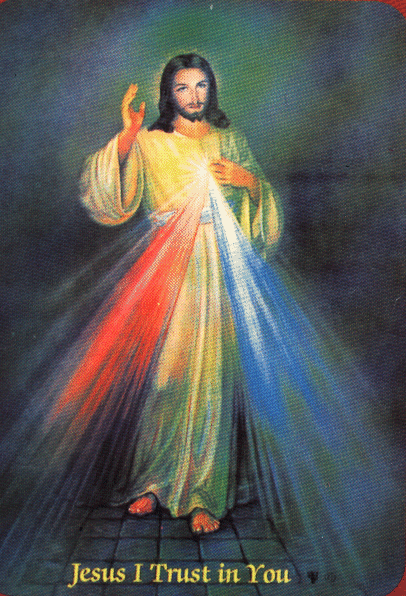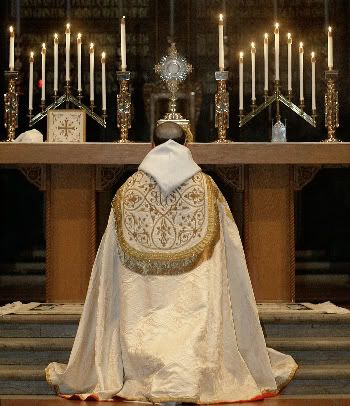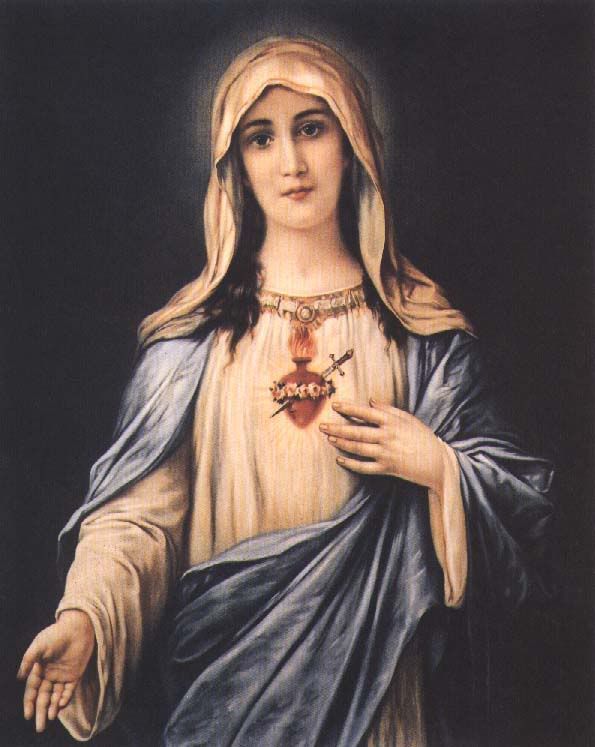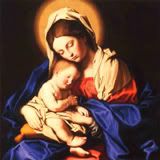Thursday, August 17, 2006
Still Moving Things Around Between Groups
But Recta Ratio Yahoo Group 4 seems to have a good start. After the dust settles on the moving of images, I can start the leisurely effort to add new ones to that and all the groups.
Wednesday, August 16, 2006
Medieval Vision Of Hell
We haven't had much eye candy lately, so, courtesy of The Lion and the Cardinal and The Roving Medievalist, here is some:

Hell, from the Hortus Deliciarum of Herrad of Hohenberg

Hell, from the Hortus Deliciarum of Herrad of Hohenberg
"By Jove, It's Not Only Possible, He's Actually Done It!"
Recta Ratio 4 Yahoo Group: Images of the Saints
Even moving all the images of Our Blessed Lady to Recta Ratio 3 and other images to Recta Ratio 2 didn't create enough free space for real growth. So now the nearly 150 images of the saints in the original group will be moving to higher ground.
Recta Ratio 4 will be a visual celebration of our senior siblings in what Father Faber called the Household of Faith, the Church Triumphant in Heaven, the Saints.
Even moving all the images of Our Blessed Lady to Recta Ratio 3 and other images to Recta Ratio 2 didn't create enough free space for real growth. So now the nearly 150 images of the saints in the original group will be moving to higher ground.
Recta Ratio 4 will be a visual celebration of our senior siblings in what Father Faber called the Household of Faith, the Church Triumphant in Heaven, the Saints.
Congratulations and Welcome!
A quick perusal of other blogs, the most I have had time for for some days, reveals that there have been two new births to report in the Catholic blogging community.
Our heartiest congratulations to the Leonardis on the birth of Peter Albert Leonardi born on the Feast of the Assumption, at 1:25 PM, measuring 22" and 8 lbs. 1 oz.
And likewise we wish many blessings to Der Tommisar's family, on the birth of "Quarta" on August 12th.
Our heartiest congratulations to the Leonardis on the birth of Peter Albert Leonardi born on the Feast of the Assumption, at 1:25 PM, measuring 22" and 8 lbs. 1 oz.
And likewise we wish many blessings to Der Tommisar's family, on the birth of "Quarta" on August 12th.
Tuesday, August 15, 2006
Recta Ratio Yahoo Groups 2 & 3
I have resisted doing this for a while, but finally, faced with Yahoo's utter inability to comprehend and fix the fact that their reformatting of the Group's photo albums earlier this year pushed us from 98% of capacity to 196%, without me adding a single new image, I needed to make a move. The reformatting was not supposed to do this, but it did. And at 198% of capacity, I could not even add a new home page image! So I could either let Recta Ratio just sit dormant with no new images added, or delete a whole lot of images I did not wish to delete, or I could add additional Recta Ratio Yahoo Groups. I decided to to this last.
Recta Ratio 2 is taking about half the images from the original group. I am sending it some of what I consider the more peripheral topics. So far, I have sent the images of Celtic High Crosses, Crucifixes, monstrances, church exteriors and interiors. I can see new albums opening for vestments, sacred vessels, and relics.
Recta Ratio 3 is devoted to images of Our Blessed Lady. There are already albums devoted to Bellini Madonnas, Bougeareau, Our Lady of Mount Carmel, and Our Lady of Walsingham. This group is even more embryonic than Recta Ratio 2, which has less than 150 images so far.
Will there ever be a Recta Ratio 4 devoted to images of the saints? As Deputy Dawg used to say (or was it Possum?) "It's possibule, it's possibule."
Now, with 3 Yahoo groups, each with 30MB of storage for images, there is plenty of room for growth. Text files will stay at the original Recta Ratio. So recipes, songs, carols, and prayers stay where they are. I know that the original Yahoo group is in need of work on its links, as they are outdated and in many cases no longer link to anything. As time permits, I will fix that.
And I absolutely intend to post something on Saint John Eudes over at The Two Hearts Ablaze for his feast on August 19th. That blog has its own Photobucket database of over 200 images of the Sacred Heart and or the Immaculate Heart as well. So much is there to do, how little time to do it!
Recta Ratio 2 is taking about half the images from the original group. I am sending it some of what I consider the more peripheral topics. So far, I have sent the images of Celtic High Crosses, Crucifixes, monstrances, church exteriors and interiors. I can see new albums opening for vestments, sacred vessels, and relics.
Recta Ratio 3 is devoted to images of Our Blessed Lady. There are already albums devoted to Bellini Madonnas, Bougeareau, Our Lady of Mount Carmel, and Our Lady of Walsingham. This group is even more embryonic than Recta Ratio 2, which has less than 150 images so far.
Will there ever be a Recta Ratio 4 devoted to images of the saints? As Deputy Dawg used to say (or was it Possum?) "It's possibule, it's possibule."
Now, with 3 Yahoo groups, each with 30MB of storage for images, there is plenty of room for growth. Text files will stay at the original Recta Ratio. So recipes, songs, carols, and prayers stay where they are. I know that the original Yahoo group is in need of work on its links, as they are outdated and in many cases no longer link to anything. As time permits, I will fix that.
And I absolutely intend to post something on Saint John Eudes over at The Two Hearts Ablaze for his feast on August 19th. That blog has its own Photobucket database of over 200 images of the Sacred Heart and or the Immaculate Heart as well. So much is there to do, how little time to do it!
The Assumption Of Our Blessed Lady, Mary Ever-Virgin
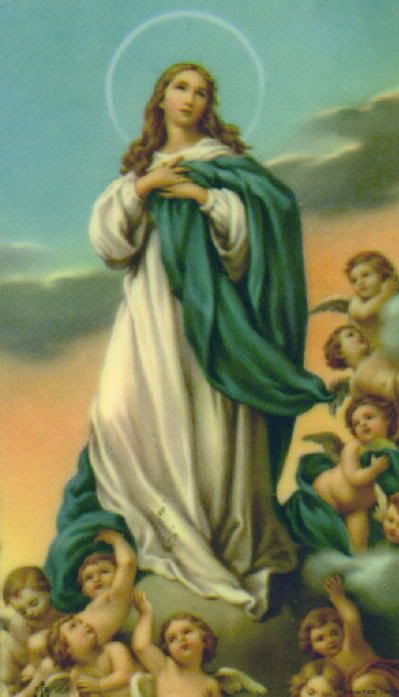
Most Holy, Immaculate Virgin and my Mother Mary! To thee who art the Mother of my Lord, the Queen of the world, the Advocate, the Hope, and the Refuge of sinners, I have recourse today, I who am the most miserable of all.
I render thee my most humble homage, O great Queen, and I thank thee for all the graces thou hast conferred on me until now, especially for having delivered me from Hell, which I have so often deserved.
I love thee, O most amiable Lady; and for the love which I bear thee, I promise to serve thee always and to do all in my power to make others love thee also. I place in thee all my hopes; I confide my salvation to thy care.
Accept me for thy servant and receive me under thy mantle, O Mother of Mercy. And since thou art so powerful with God, deliver me from all temptations; or rather, obtain for me the strength to triumph over them until death. Of thee I ask a perfect love for Jesus Christ.
Through thee I hope to die a good death. O my Mother, by the love which thou bearest to God, I beseech thee to help me at all times, but especially at the last moment of my life. Leave me not, I beseech thee, until thou seest me safe in Heaven, blessing thee and singing thy mercies for all eternity.
Amen. Thus, I hope. Thus, may it be.
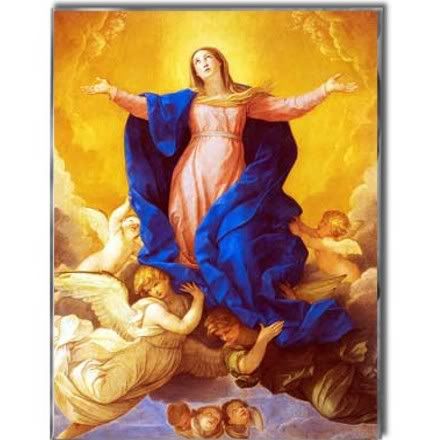
O Queen of heaven and earth! O Mother of the Lord of the world! O Mary, of all creatures the greatest, the most exalted and the most amiable! It is true that there are many in this world who neither know thee nor love thee; but in heaven there are many millions of angels and blessed spirits, who love and praise thee continually.
Even in this world, how many happy souls are there not who burn with thy love, and live enamoured of thy goodness! O, that I also could love thee, O Lady worthy of all love! O that I could always remember to serve thee, to praise thee, to honor thee, and engage all to love thee! Thou hast attracted the love of God, whom, by thy beauty, thou hast, so to say, torn from the bosom of His Eternal Father, and engaged to become man, and be thy Son.
And shall I, a poor worm of the earth, not be enamoured of thee? No, my most sweet Mother, I also will love thee much, and will do all that I can to make others love thee also.
Accept, then, O Mary, the desire that I have to love thee, and help me to execute it. I know how favorably thy lovers are looked upon by God. He, after his own glory, desires nothing more than thine, and to see thee honored and loved by all.
From thee, O Lady, do I expect all; through thee the remission of my sins, through thee perseverance. Thou must assist me at death, and deliver me from purgatory; and finally, thou must lead me to heavn. All this thy lovers hope from thee, and are not deceived. I, who love thee with so much affection, and above all other things, after God, hope for the same favors.
Amen.
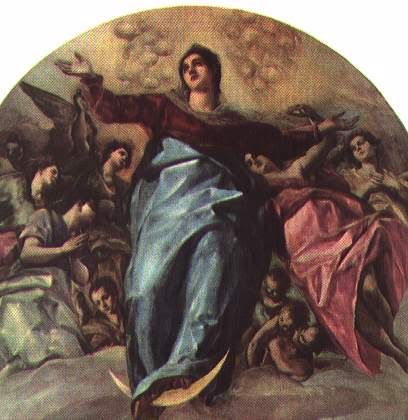
QUEEN of Heaven, most Holy Mary, I was once a slave of sin, but now I consecrate myself to thee as thy client forever. I give myself to thine honor and service for the rest of my life. Do not reject me as I deserve, but accept me as thy servant.
I have placed all my hope in thee as my Mother. I bless and thank Almighty God, because in His mercy He has given me this confidence in thee. It is true that in the past I have shamefully fallen into sin; but I trust that, through thy prayers and the merits of Jesus Christ, I have been forgiven. But yet, my Mother, this is not enough. One fear I have which troubles me: that I may fall into sin again and lose the grace of God.
The dangers are constant; my enemies never sleep; and new temptations will assail me. O my Lady, protect me. Help me in the assaults of Hell, so I may never again offend thy Divine Son Jesus.
Let not the same thing happen again, that I lose my soul, Heaven, and God. This is the grace I beg of thee, O Mary; this is what I long for; obtain this grace for me through thy prayers.
Amen.
Thus, I hope. Thus, may it be.
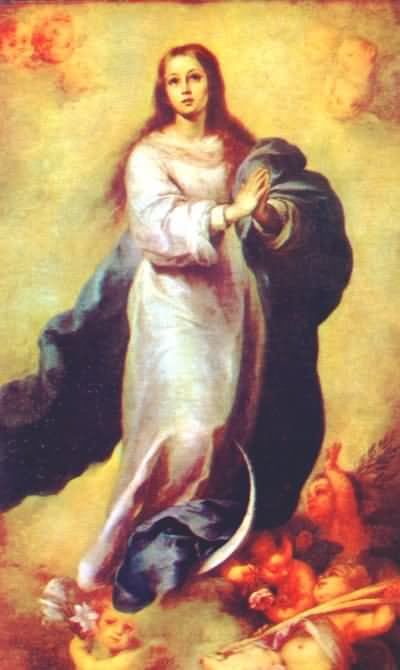
O Queen and Mother of mercy, who dispensest graces to all who have recourse to thee with so much liberality, because thou art a Queen, and with so much love, because thou art our most loving Mother; to thee do I, who am so devoid of merit and virtue, and so loaded with debts to the divine justice, recommend myself this day.
O Mary, thou holdest the keys of all the divine mercies; forget not my miseries, and leave me not in my poverty. Thou art so liberal with all, and givest more than thou art asked for, O, be thus liberal with me.
O Lady, protect me; this is all that I ask of thee. If thou protectest me, I fear nothing. I fear not the evil spirits; for thou art more powerful than all of them. I fear not my sins; for thou by one word canst obtain their full pardon from God. And if I have thy favor, I do not even fear an angry God; for a single prayer of thine will appease him. In fine, if thou protectest me, I hope all; for thou art all-powerful.
O Mother of mercy, I know that thou takest pleasure and dost glory in helping the most miserable, and, provided they are not obstinate, that thou canst help them. I am a sinner, but am not obstinate; I desire to change my life. Thou canst, then, help me; O, help me and save me. I now place myself entirely in thy hands. Tell me what I msut do in order to please God, and I am ready for all, and hope to do all with thy help, O Mary—Mary my Mother, my light, my consolations, my refuge, my hope.
Amen. Amen. Amen.

O my sovereign Queen and worthy Mother of my God, most holy Mary; I seeing myself, as I do, so despicable and loaded with so many sins, ought not to presume to call thee Mother, or even to approach thee; yet I will not allow my miseries to deprive me of the consolation and confidence that I feel in calling thee mother; I know well that I deserve that thou shouldst reject me; but I beseech thee to remember all that thy Son Jesus has endured for me, and then reject me if thou canst.
I am a wretched sinner, who, more than all others, have despised the infinite majesty of God: but the evil is done. To thee have I recourse; thou canst help me; my Mother, help me. Say not that thou canst not do so; for I know that thou art all-powerful, and that thou obtainest whatever thou desirest of God; and if thou sayest that thou wilt not help me, tell me at least to whom I can apply in this my so great misfortune. "Either pity me," will I say with the devout St. Anselm, "O my Jesus, and forgive me, and do thou pity me, my Mother Mary, by interceding for me, or at least tell me to whom I can have recourse, who is more compassionate, or in whom I can have greater confidence than in thee" ("Aut miseremini miseri, tu parcendo, tu interveniendo; aut ostendite, ad quos tutius fugiam misericordiores; et monstrate, in quibus certius confidam potentiores"—Orat. 50).
Amen.
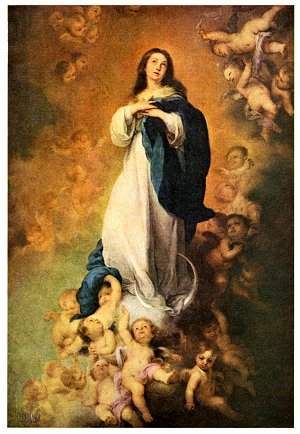
O Mother of God, Queen of angels and hope of men, give ear to one who calls upon thee and has recourse to thy protection. Behold me this day prostrate at thy feet; I, a miserable slave of hell, devote myself entirely to thee. I desire to be forever thy servant. I offer myself to serve and honor thee to the utmost of my power during the whole of my life.
I know that the service of one so vile and miserable can be no honor to thee, since I have so grievously offended Jesus, thy Son and my Redeemer. But if thou wilt accept one so unworthy for thy servant, and by thy intercession change me, and thus making me worthy, this very mercy will give thee that honor which so miserable a wretch as I can never give thee.
Receive me, then, and reject me not, O my Mother. The Eternal Word came from heaven on earth to seek for lost sheep, and to save them he became thy Son. And when one of them goes to thee to find Jesus, wilt thou despise it?
The price of my salvation is already paid; my Savior has already shed his blood, which suffices to save an infinity of worlds. This blood has only to be applied even to such a one as I am. And that is thy office, O Blessed Virgin; to thee does it belong, as I am told by St. Bernard, to dispense the merits of this blood to whom thou pleasest. To thee does it belong, says St. Bonaventure, to save whomsoever thou willest, "whomsoever thou willest will be saved" ("Quem vis, ipse salvus erit").
Oh, then, help me, my Queen; my Queen, save me. To thee do I this day consecrate my whole soul; do thou save it. O salvation of those who invoke thee, I conclude in the words of the same saint, "O salvation of those who call upon thee, do thou save me" ("O Salus te invocantium!").
Amen.
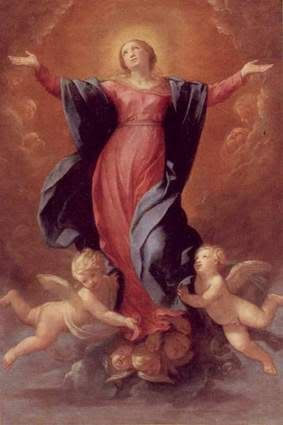
Behold at thy feet, O Mary my hope, a poor sinner, who has so many times been by his own fault the slave of hell. I know that by neglecting to have recourse to thee, my refuge, I allowed myself to be overcome by the devil. Had I always had recourse to thee, had I always invoked thee, I certainly should not have fallen.
I trust, O Lady most worthy of all our love, that through thee I have already escaped from the hands of the devil, and that God has pardoned me. But I tremble lest at some future period I may again fall into the same bonds. I know that my enemies have not lost the hope of again overcoming me, and already they prepare new assaults and temptations for me.
O, my Queen and refuge, do thou assist me. Place me under thy mantle; permit me not again to become their slave. I know that thou wilt help me and give me the victory, provided I invoke thee; but I dread lest in my temptations I may forget thee, and neglect to do so.
The favor, then, that I seek of thee, and which thou must grant me, O most holy Virgin, is that I may never forget thee, and especially in time of temptation; grant that I may then repeatedly invoke thee, saying, "O Mary, help me; O Mary, help me."
And when my last struggle with hell comes, at the moment of death, then, my Queen, help me more than ever, and thou thyself remind me to call on thee more frequently either with my lips or in my heart; that, being thus filled with confidence, I may expire with thy sweet name and that of thy Son Jesus on my lips; that so I may be able to bless thee and praise thee, and not depart from thy feet in Paradise for all eternity.
Amen.
Monday, August 14, 2006
The Problem With the Church In the UK
Sunday, August 13, 2006
A Vibrant Parish Life
Ann Taves, The Household of Faith, University of Notre Dame Press, Notre Dame, IN, 1986 pp. 120-125.
The impact of devotionalism on the life of the parish church can be illustrated by the example of Holy Family praish on Chicago's west side. Founded in 1857 by the Jesuit Arnold Damen, it soon boasted the largest English-speaking congregation in the city and one of the largest and most elaborate parish complexes in the nation. Moreover, several of the church's priests, most notably Fathers Damen and Cornelius Smarius, were among the leading mission preachers of the day; they thus spent much of their time attempting to arouse and institutionalize the type of piety evident at Holy Family parish in churches run by secular clergy throughout the midwest. As an illustration, Holy Family church is therefore probably not entirely typical. However, since the parish served as a model for other churches in its own time, it may be taken to reflect an ideal, whether or not all parishes were able to live up to it.
According to Brother Thomas Mulkerins, S.J., the parish historian, Father Damen began introducing devotional prectices and founding devotional organizations among his parishioners shortly after a plain, wooden temporary church building was erected in 1857. In November of 1857, the first of what were to become annual novenas in preparation for the Feast of the Immaculate Conceptin was celebrated. During the first lenten season after the church's establishment, Damen celebrated Mass daily, "followed by a meditation read to the people, the rosary, instructions and benediction on Wednesday, and Stations of the Cross on Friday evening." On the first of May 1858, "the fathers began the beautiful May devotions in honor of Our Lady. These were held every evening at eight o'clock, and took such hold upon the people as to mark an increased attendance every year." In October of 1858, the parish held its first mission week and beginning a few weeks later, "the devotions to the souls in Purgatory, during the month of Novemeber, were practiced for the first time in the parish."
During the same period, Damen also founded the Archconfraternity of the Immaculate Heart of Mary, the Altar Society, the Society of St. Vincent de Paul, and the Society of the Holy Family for Men (later to become the Married Men's Sodality). At the same time, Damen oversaw an ambitious building program. Following the construction of the wooden frame church, a residence was built for the priests, then a school, and by the summer of 1860, a permanent Gothic church built of stone. Despite this feverish building campaign, "Father Damen and his associates," according to Mulkerins, "never lost sight of the spiritual end, which was the motive power of all their actions." Significantly, Mulkerins defines this spiritual end in devotional terms. Specifically, he says that "the spiritual end is seen in the regular ministrations and in the various devotions introduced, the novenas, the confraternities, and the sodalities, the courses of lectures and instructions, the Lenten, May, and November devotions, the solicitude for the poor, the orphans, and the outcast."
Although the exterior of the new Gothic building was not, in Mulkerin's words, "very attractive and prepossessing," the interior of the church, acclaimed by many as "one of the most beautiful...in the United States," embodied the devotional style which had been introduced into the old church.
The church contained three altars, a main altar and two side altars. The main altar stretched the width of the church and extended upward fifty-two feet, to within inches of the ceiling. Nearly everything atop the main altar was designed to foster devotion to the Blessed Sacrament and the passion. Above it was a large Gothic tabernacle with angels on either side in which consecrated hosts were stored. The "benediction throne" on which the host could be displayed was attached to the "roof" of the lower part of the tabernacle.
The main altar also contained four "cases" of sacred relics. According to Mulkerins, some of these were, "very precious, as they contained fragments of the bones or other sacred objects belonging to apostles and martyrs--one especially, that of the Holy Cross, contained some relics of the instruments of the passion, and was put on exhibition on Good Friday." Statues of the Sacred heart, Saint Anne, and Saint Joseph were also located on the main latar with "lights burning daily before them."
The two permanent side altars were dedicated to the Virgin Mary and St. joseph. Both were constructed "on the same lines as the main altar, and reached from the floor of the sanctuary to the ceiling." According to Mulkerins, each had three Gothic turrets, two smaller ones on the sides and the main one on top. The side altar dedicated to the Virgin contained a large statue of Our Lady of Lourdes flanked by two smaller statues of Saint Aloysius and Saint John berchmans. A picture of the Immaculate Conception hung nearby. The statue of Our Lady of Lourdes was the focus of May devotions in the new church. during May, the "little statue..., noted for its devotional beauty,...was taken down from its niche on the top of the altar and placed in the beautiful shrine prepared for it." The side altar dedicated to Saint Joseph contained two pictures, one of Saint Charles Borromeo administering holy communion to Saint Aloysius, and of Saint Joseph holding the child Jesus. Statues of Saint Aloysuis and Saint Stanislaus were located on either side of the base of the altar.
Mulkerins reported that in 1873, "new Stations of the Cross were erected." These stations, imported from Europe, were eight feet high and six feet wide. Mulkerins stressed the realistic character of the paintings, with their almost life-sized figures each standing out "as if the life blood was coursing through the body." A few other devotions and a variety of new devotional societies were introduced once the congregation moved into the new church. New devotions included devotions to the Sacred Heart of Jesus, an annual solemn novena "in honor of the patronage of Saint joseph<" and the forty hours' devotion, which was introduced in 1876.
According to Mulkerins, "the first great mission ever held in Holy Family Parish was begun[in August 1861], and continued for two weeks." Mission exercises included Mass and instruction at five in the morning; Mass and a sermon at eight in the morning; the way of the cross and instruction in the afternoon; and the rosary, a sermon, and benediction of the Blessed Sacrament in the evening.
Another mission was held in 1869 which was "thought by some to be, perhaps, the greatest mission ever given in Holy Family Church." According to Mulkerins, "Fathers Damen, Smarius, Masselis, Coghlan, and Verdin [from Holy Family parish] all took par,t and at least two of these, Fatherd Damen and Smarius, were undoubtably the greatest missionaries in the United States during their day."
New organizations founded in the new church included an Acolytical Society for boys in 1860, the Association of the Sacred Heart, the Holy Rosary Society, the Young Ladies' Sodality, the Holy Angels' Sodality, and the Society of the Living Rosary in 1861; Saint Ann's Sodality for married women and the Married Men's Band in 1862; the Purgatorial society and the Apostleship of Prayer in 1864; the Sodality of the Annunciation in 1868; the Bona Mors Society and the Young Men's Sodality in 1869; and the Catholic Total Abstinence and Benevolent Society in 1870.
Although mid-nineteenth century American priests spent an enormous amount of time raising money and overseeing the construction of new churches and schools, their obsession with building, viewed from a devotional angle, reflected the immigrant Catholics' desire to create a distinctively Catholic space. For the Romanized Catholic, the parish church was the center of that Catholic space, and within the church, the altar with its tabernacle containing the Blessed Sacrament was the center of attention. But eh side altars, votive candles, the stained glass, the stations of the cross, and the dim light, all contributed to the creation of a distinctively Catholic interior as well.
A man who had grown up in Holy Family parish captured something of th eimpact of the church's interior. Returning some years later, he said:
The interior design of the church was inteded to conjure up exactly the sort of feelings this retrning parishioner described. Catholics were taught that Jesus was present on the altar, that Jesus, Mary, and the saints did respond to prayer, and that graces and favors were more readily available in the church than elsewhere. The devotional artifacts within the church helped to create the sense that one was in a sacred space where familiar intercourse between this word and the other world could take place.
The luxuriant growth of devotional organizations both protected, defined, and directed attention toward this sacred space. In the words of one nineteenth century prelate, such organizations were designed "to create artificially environments in which the supernatural life could develop freely." While church buildings created a material space for interacting with the supernatural, devotional organizations created a social space in which such activities could be taken for granted. These organizations, the primary arena for intensified adult lay involvement in the church at that time, thus helped maintain the subjective reality of that other, supernatural world with which Catholics communicated through prayer.
Although devotional organizations were at the center of parish life, they were surrounded by a growing network of organizations (mutual benefit, temperance, and charity) and institutions (schools, hospitals, orphanages, and cemeteries)that radiated outward from the church. This growing network of associations and institutions permitted and encouraged Catholics to remain within the confines of the group for all their primary relationships throughout the various stages of their lives.
And on devotional modes of worship generally, from pages 106-107:
"Special devotions," were, as (Father Frederick W.) Faber pointed out, "essentially doctrinal devotions," and, in keeping with the uncompromising spirit of late Tridentine or ultramontane Catholicism, they stressed precisely those doctrines which Protestants rejected. Some--such as Blessed Sacrament devotions, devotions to Mary, particularly as the Immaculate Conception, nd devotions to the souls in purgatory- embodied exclusively Catholic doctrines. Others, such as passion devotions and devotions to the Sacred Heart, though not exclusively associated with Catholicism, linked the passion and the Eucharistic Wafer and thus highlighted the Catholic understanding of the Mass as sacrifice.
Morevover, virtually all Catholic devotions, including novenas, scapulars, and devotions to the saints and their relics, presupposed the Catholic understanding of the communion of saints and the spiritul economy of merits and satisfactions. The use of indulgences to promote devotions was simply a higher level manifestation of the same phenomona. As Faber explained, the desire for indulgences was "almost an infallible sign of a good [ultramontane] Catholic," for "indulgences mix us up with so many peculiarities of the Church, from the jurisdiction of the Holy See to the belief in purgatory, good works, the saints, and satisfaction, that they almost ensure orthodoxy."
Viewed doctrinally, devotions were an intentionally and aggresively Catholic phenomonon wich identified orthodoxy with an affirmation of and indeed an emphasis on that which was distinctively Catholic in doctrine. Devotions thus set the Catholic and the non-Catholic, the orthodox believer and the heretic apart in a clear and distinctive way.
The impact of devotionalism on the life of the parish church can be illustrated by the example of Holy Family praish on Chicago's west side. Founded in 1857 by the Jesuit Arnold Damen, it soon boasted the largest English-speaking congregation in the city and one of the largest and most elaborate parish complexes in the nation. Moreover, several of the church's priests, most notably Fathers Damen and Cornelius Smarius, were among the leading mission preachers of the day; they thus spent much of their time attempting to arouse and institutionalize the type of piety evident at Holy Family parish in churches run by secular clergy throughout the midwest. As an illustration, Holy Family church is therefore probably not entirely typical. However, since the parish served as a model for other churches in its own time, it may be taken to reflect an ideal, whether or not all parishes were able to live up to it.
According to Brother Thomas Mulkerins, S.J., the parish historian, Father Damen began introducing devotional prectices and founding devotional organizations among his parishioners shortly after a plain, wooden temporary church building was erected in 1857. In November of 1857, the first of what were to become annual novenas in preparation for the Feast of the Immaculate Conceptin was celebrated. During the first lenten season after the church's establishment, Damen celebrated Mass daily, "followed by a meditation read to the people, the rosary, instructions and benediction on Wednesday, and Stations of the Cross on Friday evening." On the first of May 1858, "the fathers began the beautiful May devotions in honor of Our Lady. These were held every evening at eight o'clock, and took such hold upon the people as to mark an increased attendance every year." In October of 1858, the parish held its first mission week and beginning a few weeks later, "the devotions to the souls in Purgatory, during the month of Novemeber, were practiced for the first time in the parish."
During the same period, Damen also founded the Archconfraternity of the Immaculate Heart of Mary, the Altar Society, the Society of St. Vincent de Paul, and the Society of the Holy Family for Men (later to become the Married Men's Sodality). At the same time, Damen oversaw an ambitious building program. Following the construction of the wooden frame church, a residence was built for the priests, then a school, and by the summer of 1860, a permanent Gothic church built of stone. Despite this feverish building campaign, "Father Damen and his associates," according to Mulkerins, "never lost sight of the spiritual end, which was the motive power of all their actions." Significantly, Mulkerins defines this spiritual end in devotional terms. Specifically, he says that "the spiritual end is seen in the regular ministrations and in the various devotions introduced, the novenas, the confraternities, and the sodalities, the courses of lectures and instructions, the Lenten, May, and November devotions, the solicitude for the poor, the orphans, and the outcast."
Although the exterior of the new Gothic building was not, in Mulkerin's words, "very attractive and prepossessing," the interior of the church, acclaimed by many as "one of the most beautiful...in the United States," embodied the devotional style which had been introduced into the old church.
The church contained three altars, a main altar and two side altars. The main altar stretched the width of the church and extended upward fifty-two feet, to within inches of the ceiling. Nearly everything atop the main altar was designed to foster devotion to the Blessed Sacrament and the passion. Above it was a large Gothic tabernacle with angels on either side in which consecrated hosts were stored. The "benediction throne" on which the host could be displayed was attached to the "roof" of the lower part of the tabernacle.
The main altar also contained four "cases" of sacred relics. According to Mulkerins, some of these were, "very precious, as they contained fragments of the bones or other sacred objects belonging to apostles and martyrs--one especially, that of the Holy Cross, contained some relics of the instruments of the passion, and was put on exhibition on Good Friday." Statues of the Sacred heart, Saint Anne, and Saint Joseph were also located on the main latar with "lights burning daily before them."
The two permanent side altars were dedicated to the Virgin Mary and St. joseph. Both were constructed "on the same lines as the main altar, and reached from the floor of the sanctuary to the ceiling." According to Mulkerins, each had three Gothic turrets, two smaller ones on the sides and the main one on top. The side altar dedicated to the Virgin contained a large statue of Our Lady of Lourdes flanked by two smaller statues of Saint Aloysius and Saint John berchmans. A picture of the Immaculate Conception hung nearby. The statue of Our Lady of Lourdes was the focus of May devotions in the new church. during May, the "little statue..., noted for its devotional beauty,...was taken down from its niche on the top of the altar and placed in the beautiful shrine prepared for it." The side altar dedicated to Saint Joseph contained two pictures, one of Saint Charles Borromeo administering holy communion to Saint Aloysius, and of Saint Joseph holding the child Jesus. Statues of Saint Aloysuis and Saint Stanislaus were located on either side of the base of the altar.
Mulkerins reported that in 1873, "new Stations of the Cross were erected." These stations, imported from Europe, were eight feet high and six feet wide. Mulkerins stressed the realistic character of the paintings, with their almost life-sized figures each standing out "as if the life blood was coursing through the body." A few other devotions and a variety of new devotional societies were introduced once the congregation moved into the new church. New devotions included devotions to the Sacred Heart of Jesus, an annual solemn novena "in honor of the patronage of Saint joseph<" and the forty hours' devotion, which was introduced in 1876.
According to Mulkerins, "the first great mission ever held in Holy Family Parish was begun[in August 1861], and continued for two weeks." Mission exercises included Mass and instruction at five in the morning; Mass and a sermon at eight in the morning; the way of the cross and instruction in the afternoon; and the rosary, a sermon, and benediction of the Blessed Sacrament in the evening.
Another mission was held in 1869 which was "thought by some to be, perhaps, the greatest mission ever given in Holy Family Church." According to Mulkerins, "Fathers Damen, Smarius, Masselis, Coghlan, and Verdin [from Holy Family parish] all took par,t and at least two of these, Fatherd Damen and Smarius, were undoubtably the greatest missionaries in the United States during their day."
New organizations founded in the new church included an Acolytical Society for boys in 1860, the Association of the Sacred Heart, the Holy Rosary Society, the Young Ladies' Sodality, the Holy Angels' Sodality, and the Society of the Living Rosary in 1861; Saint Ann's Sodality for married women and the Married Men's Band in 1862; the Purgatorial society and the Apostleship of Prayer in 1864; the Sodality of the Annunciation in 1868; the Bona Mors Society and the Young Men's Sodality in 1869; and the Catholic Total Abstinence and Benevolent Society in 1870.
Although mid-nineteenth century American priests spent an enormous amount of time raising money and overseeing the construction of new churches and schools, their obsession with building, viewed from a devotional angle, reflected the immigrant Catholics' desire to create a distinctively Catholic space. For the Romanized Catholic, the parish church was the center of that Catholic space, and within the church, the altar with its tabernacle containing the Blessed Sacrament was the center of attention. But eh side altars, votive candles, the stained glass, the stations of the cross, and the dim light, all contributed to the creation of a distinctively Catholic interior as well.
A man who had grown up in Holy Family parish captured something of th eimpact of the church's interior. Returning some years later, he said:
I noted the seven lights still burning before he statue of the Blessed Virgin Mary, lighted in 1871 by Father Damen, and to be kept forever burning in her honor in thanksgiving for the preservation of the church and the parish from the ravages of the great fire that all but consumed Chicago. The fine old Stations of the Cross still ornament and glorify the walls looking more than ever like old masters. The same majestic altar, the sturdy pews, the roomy confessionals and the strikingly beautiful altar rail, both masterpieces of the wood carver's art, the galaxy of saints and martyrs and confessors all about on their carven pedestals and the soft light filtering through the [stained glass] windows selected and executed with erudition and devotion, all conjure up feelings and emotions as I experience nowhere else--as if it were nearer Heaven here than elsewhere.
The interior design of the church was inteded to conjure up exactly the sort of feelings this retrning parishioner described. Catholics were taught that Jesus was present on the altar, that Jesus, Mary, and the saints did respond to prayer, and that graces and favors were more readily available in the church than elsewhere. The devotional artifacts within the church helped to create the sense that one was in a sacred space where familiar intercourse between this word and the other world could take place.
The luxuriant growth of devotional organizations both protected, defined, and directed attention toward this sacred space. In the words of one nineteenth century prelate, such organizations were designed "to create artificially environments in which the supernatural life could develop freely." While church buildings created a material space for interacting with the supernatural, devotional organizations created a social space in which such activities could be taken for granted. These organizations, the primary arena for intensified adult lay involvement in the church at that time, thus helped maintain the subjective reality of that other, supernatural world with which Catholics communicated through prayer.
Although devotional organizations were at the center of parish life, they were surrounded by a growing network of organizations (mutual benefit, temperance, and charity) and institutions (schools, hospitals, orphanages, and cemeteries)that radiated outward from the church. This growing network of associations and institutions permitted and encouraged Catholics to remain within the confines of the group for all their primary relationships throughout the various stages of their lives.
And on devotional modes of worship generally, from pages 106-107:
"Special devotions," were, as (Father Frederick W.) Faber pointed out, "essentially doctrinal devotions," and, in keeping with the uncompromising spirit of late Tridentine or ultramontane Catholicism, they stressed precisely those doctrines which Protestants rejected. Some--such as Blessed Sacrament devotions, devotions to Mary, particularly as the Immaculate Conception, nd devotions to the souls in purgatory- embodied exclusively Catholic doctrines. Others, such as passion devotions and devotions to the Sacred Heart, though not exclusively associated with Catholicism, linked the passion and the Eucharistic Wafer and thus highlighted the Catholic understanding of the Mass as sacrifice.
Morevover, virtually all Catholic devotions, including novenas, scapulars, and devotions to the saints and their relics, presupposed the Catholic understanding of the communion of saints and the spiritul economy of merits and satisfactions. The use of indulgences to promote devotions was simply a higher level manifestation of the same phenomona. As Faber explained, the desire for indulgences was "almost an infallible sign of a good [ultramontane] Catholic," for "indulgences mix us up with so many peculiarities of the Church, from the jurisdiction of the Holy See to the belief in purgatory, good works, the saints, and satisfaction, that they almost ensure orthodoxy."
Viewed doctrinally, devotions were an intentionally and aggresively Catholic phenomonon wich identified orthodoxy with an affirmation of and indeed an emphasis on that which was distinctively Catholic in doctrine. Devotions thus set the Catholic and the non-Catholic, the orthodox believer and the heretic apart in a clear and distinctive way.



